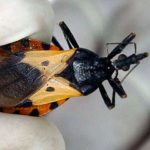
Researchers have successfully demonstrated the effectiveness of their developed vaccines against leishmaniasis, a disfiguring skin condition, through animal experiments. The most promising candidate is currently in the preparatory stages for a Phase 1 human trial. In their recent research, the team uncovered how these vaccine candidates, created using mutant disease-causing parasites, induce molecular changes in host cells that play specific roles in stimulating the immune response.
Interestingly, the two Leishmania parasite species used as the basis for these vaccines had different effects on the immunized host, despite employing the same CRISPR gene-editing technique. One of the vaccines promoted immune response development by inhibiting a host metabolite that suppresses immune activity, while the other enhanced the activation of a chemical pathway, priming immune cells to combat pathogens.
Abhay Satoskar, a professor of pathology at The Ohio State University College of Medicine and co-leader of the research team, emphasized the significance of this finding, stating that while the vaccines are protective at a broad level, their mechanisms at the molecular level can be entirely distinct. This discovery could be conceptually important and potentially pave the way for the development of new interventions by identifying and utilizing these immune-modulating pathways.
The primary vaccine was created by editing the genome of Leishmania major, responsible for cutaneous leishmaniasis in tropical and subtropical regions of the Eastern Hemisphere. A backup vaccine was developed using Leishmania mexicana, a more virulent species found in South, Central, and North America.
These findings on the metabolic effects of the L. major and L. mexicana vaccines were published on August 29, 2023, in the journal iScience. Leishmaniasis is prevalent in 90 countries and affects approximately 12 million people globally at any given time. Currently, no licensed human vaccine exists, and the only treatment for the skin lesions involves weeks of daily injections with unpleasant side effects. Visceral leishmaniasis, a more lethal form, affects organs and is fatal if left untreated.
To create these live attenuated vaccines, Satoskar and his colleagues applied modern technology to the century-old Middle Eastern practice of leishmanization, which involves introducing the live parasite to the skin to create a small infection. Once healed, this infection leads to lifelong immunity against further disease.
In previous research, the team used CRISPR to delete the centrin gene, which codes for a protein that supports the parasite’s physical structure, from the genomes of both L. major and L. Mexicana. Experiments showed that vaccinated mice remained free of skin lesions, and the number of parasites at the infection site was kept in check.
In further studies, the researchers injected mouse ears with a normal parasite, a mutated parasite vaccine, or a placebo, mimicking the bite of an infected sand fly. Leishmania is transmitted through the bite of infected sand flies in both humans and animals. Mass spectrometry was used to identify the most prominent metabolites at the injection site, including amino acids, vitamins, and other small molecules produced as a result of metabolism.
The results indicated that the L. major vaccine induced a pro-inflammatory metabolic response in mice by utilizing the amino acid tryptophan to block signals from a molecule that suppresses immunity. In contrast, the L. mexicana vaccine enriched a series of metabolic reactions that activated the necessary pro-inflammatory functions of frontline immune cells.
Abhay Satoskar noted that this unbiased approach to analyzing metabolites at the injection site is crucial, as there is a growing interest in understanding how immune cell metabolism modulates immune function. Removing the centrin gene eliminated the parasites’ ability to manipulate the immune system in a way that would hinder the development of protective immunity, actually promoting vaccine-induced immunity. While this information may not be necessary for regulatory approval of these vaccines, it could prove useful in supplementing vaccination strategies.
Satoskar emphasized the importance of understanding the vaccine mechanisms to develop new vaccines or drugs that target these pathways. Insights gained from immunomodulation can be applied to the development of other therapeutic agents, which is particularly significant given the limited treatment options for leishmaniasis, with only four existing drugs available.











